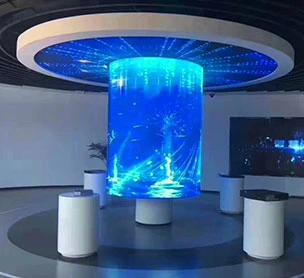- Industrial Area 4, Al Qusais, Dubai, United Arab Emirates
- uae@hawaiiledscreen.com
Blog Details
LED SCREEN-LIFE EXPECTANCY

- Posted On 22 Apr 2022
#ledvideowallinindia ,#rentalLedscreenindia ,#advertisingleddisplayscreeninindia ,#ledscreenmanufacturers ,#Ledwallpriceinkerala ,#p2ledwallinindia
LUMINOSITY AND LED LIFE EXPECTANCY IN TEMPERATURE
The operating temperature of the LED screen is a crucial component that determines the life expectancy of an LED screen system. The higher the temperature, the more the LED screen will wear out, and the shorter its lifespan will be. That is why it is critical for LED screen system electronics to be optimised and well-designed in order for the LED screen to perform at its best.
WHAT IMPACT DOES BRIGHTNESS HAVE ON THE LED'S LIFE EXPECTANCY?
The operating current is another cause of wear to consider. Most LED screens operate at 350 milliamps (mA). The luminous efficiency increases dramatically with a higher current, but at the expense of their life expectancy. In other words, a higher current reduces the product's lifespan. To maximise the lifespan of LED screen systems, it is critical to carefully monitor brightness and not exceed the recommended electrical current levels in order to achieve a higher level of brightness.
Here are some suggestions for extending the life of an LED screen display.
Stay away from areas that are too moist or too sunny.
We understand that the optimum position for an outdoor LED display, at least from an advertising standpoint, does not necessarily coincide with the best meteorological and atmospheric conditions for the show's preservation. In any case, despite the fact that our outdoor LED screen displays are rainproof, a somewhat dry climate with a reasonable number of hours of sunlight is more beneficial to the preservation of any LED screen display than a wetter and sunnier climate. When it comes to interior LED screen displays, stay away from places where there is a lot of humidity or where dust collects.
You can better protect it from environmental conditions this way.
Ensure that sunlight does not directly hit the LED screen display.
If you're putting indoor LED screen displays in your business window, make sure the sun doesn't shine directly on them, as this will require you to alter the contrast and brightness to extremes. While HAWAII LED SCREEN always provide optimal visibility regardless of ambient brightness, pushing these settings would increase power consumption and, as a result, reduce the monitor's lifespan. When it comes to window display decorating in your business, keep this in mind.
Place your screen on a flat surface at all times.
This is another crucial guideline for extending the life of your LED screen. If the screen is not to be hung on the wall, it should be put on a stable and non-tilted surface. To determine the best viewing distance for consumers, multiply the TV's size by four and set it at the user's eye level, as forcing their neck to view the screen properly can cause them to lose interest. Otherwise, it could be inconvenient.
Use a voltage regulator and a surge suppressor.
Although many users confuse the two, the truth is that they are two distinct parts. Surge suppressors are devices that are meant to protect against short voltage surges, such as those that occur during a network cycle. Other safeguards, such as filters against electromagnetic interference and electrical noise, can be added to these elements. The suppressor may be destroyed and stop working if the surge lasts for a long time or is repeated frequently, so this is not a good solution for voltage regulation.
Voltage regulators, on the other hand, mitigate voltage changes that last longer than one network cycle, or more than 16.6 milliseconds. Even if the voltage on the grid increases and lowers, a voltage with exceptional stability and no fluctuations is achieved in this manner. In summary, the voltage regulator maintains a consistent voltage level, which is critical for the proper operation of any electrical device.
As a result, we advocate utilising both the surge suppressor and the voltage regulator because they are complementary and equally important. There are currently firms selling them both as part of a single regulator technology (or electronic regulator).
To clean the screen, avoid using abrasive substances.
It's critical to utilise goods with the right formulation for the display's external components if you want to extend the life of your LED SCREEN display. When we say this, we're not just talking about chemical treatments; we're also talking about items like vinegar, which are routinely used at home to clean televisions. When you purchase your screen, Visual Led will advise you on the best products to use to clean your LED SCREEN display.
We also recommend lightly moistening a special cloth or soft chamois, such as that used to clean spectacles.
Do not use your fingers to touch the LED screen.
Although it may appear self-evident, this is one of the most common errors committed by both individuals and businesses. Always hold your LED SCREEN displays for shops and shop windows at the ends if you need to move their location. Obviously, you must use caution to avoid accidently striking them.
